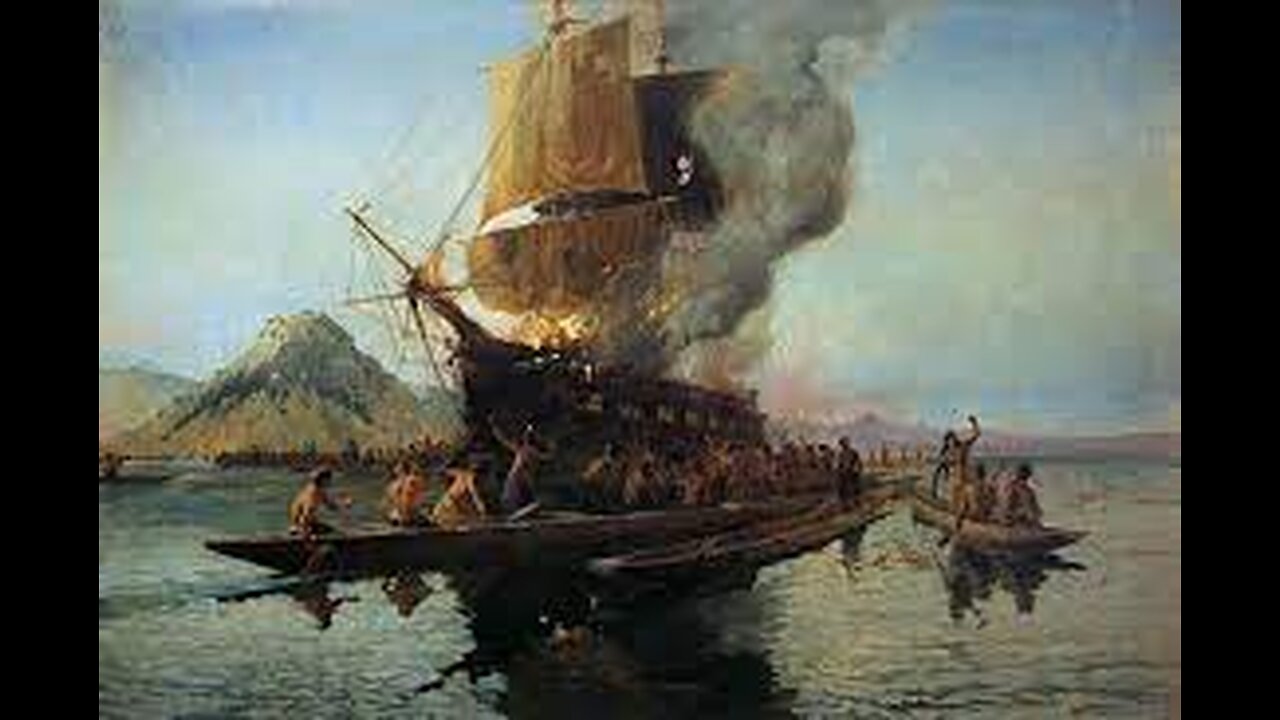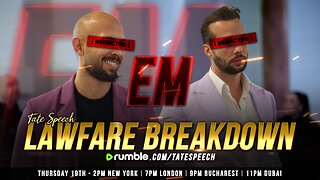Premium Only Content

66 SAILORS MASSACRED AND EATEN BY A TRIBE IN NEW ZEALAND BOYD INCIDENT
The Boyd Massacre occurred in December 1809 when Māori residents of Whangaroa Harbour in northern New Zealand killed and ate between 66 and 70 Europeans. This is reputedly the highest number of Europeans killed by Māori in a single event in New Zealand, and the incident is also one of the bloodiest instances of cannibalism on record. The massacre is thought to have been in revenge for the whipping of a young Māori chief by the crew of the sailing ship Boyd.n retribution, European whalers attacked the island pa of chief Te Pahi about 60 km south-east, in the possibly mistaken belief that he ordered the killings. Between 16 and 60 Maori and one European died in the clash. News of the events delayed the first missionary visits to the country, and caused the number of shipping visits to fall to "almost nothing" over the next few yearsThe Boyd was a 395-ton (bm) brigantine convict ship that sailed in October 1809 from Australia's Sydney Cove to Whangaroa on the east coast of New Zealand's Northland Peninsula to pick up kauri spars. She was under the command of Captain John Thompson and carried about 70 people.he ship carried several passengers, including ex-convicts who had completed their transportation sentences and four or five New Zealanders who were returning to their homeland. Among the latter was Te Ara, or Tarrah, known to the crew as George, the son of a Māori chief from Whangaroa. Te Ara had spent more than a year on board different vessels that included a sealing expedition to islands in the Southern Ocean.https://alchetron.com/Boyd-massacre#boyd-massacre-e2d414fa-82de-4c30-835c-4310aab8c9b-resize-750.jpg:~:text=On%20the%20Boyd,some%20slight%20theft.%22This treatment of Te Ara prompted him to seek utu, or revenge. Te Ara regained the confidence of the captain and persuaded him to put into Whangaroa Bay, assuring him that it was the best place to secure the timber he desired.
Upon reaching Whangaroa, Te Ara reported his indignities to his tribe and displayed the whip marks on his back. In accordance with Māori customs, they formed a plan for utu. Under British law, whipping was the common punishment for minor crimes. A British person could be legally hanged for stealing goods to the value of 5 shillings. In Māori culture the son of a chief was a privileged figure who did not bow to an outsider's authority. Physical punishment of a chief's son, though justified by British law, caused the chief to suffer a loss of face (or "mana"), and to Māori this warranted a violent retribution.
Killings
Three days after the Boyd's arrival, the Māori invited Captain Thompson to follow their canoes to find suitable kauri trees. Thompson, his chief officer and three others followed the canoes to the entrance of the Kaeo River. The remaining crew stayed aboard with the passengers, preparing the vessel for the voyage to England.
When the boats were beyond the Boyd's sight the Māori attacked the pākehā (foreigners), killing all with clubs and axes. The Māori stripped the western clothes from the victims and a group donned them as disguise. Another group carried the bodies to their pā (village) to be eaten.
At dusk the disguised group manned the longboat, and at nightfall they slipped alongside the Boyd and were greeted by the crew. Other Māori canoes awaited the signal to attack. The first to die was a ship's officer: the attackers then crept around the deck, stealthily killing all the crew. The passengers were called to the deck and then killed. Five people hid up the mast among the rigging, where they witnessed the dismembering of their friends and colleagues' bodies below.
The next morning the survivors saw a large canoe carrying chief Te Pahi from the Bay of Islands enter the harbour. The chief had come to the area to trade with the Whangaroa Māori. The Europeans called out to Te Pahi's canoe for help. After Te Pahi had gathered the survivors from the Boyd, they headed for shore. But two Whangaroa canoes pursued them. As the survivors fled along the beach, Te Pahi watched as all but one were caught and killed by the pursuers.
European survivors
Five people were spared in the massacre: Ann Morley and her baby, in a cabin; apprentice Thomas Davis (or Davison), hidden in the hold; the second mate; and two-year-old Betsy Broughton, taken by a local chief who put a feather in her hair and kept her for three weeks before rescue. The second mate was killed and eaten when his usefulness in making fish-hooks was exhausted.The Whangaroa Māori towed the Boyd towards their village until it grounded on mudflats near Motu Wai (Red Island). They spent several days ransacking the ship, tossing flour, salt pork, and bottled wine overboard. The Māori were interested in a large cache of muskets and gunpowder.
About 20 Māori smashed barrels of gunpowder and attempted to make the muskets functional. Chief Piopio sparked a flint. This ignited the gunpowder, causing a massive explosion that killed him and nine other Māori instantly. A fire then swept the ship igniting its cargo of whale oil. Soon all that was left of the Boyd was a burnt-out sunken hull. Māori declared the hull tapu, sacred or prohibited.
-
 1:23:22
1:23:22
Tate Speech by Andrew Tate
4 hours agoEMERGENCY MEETING EPISODE 96 - LAWFARE BREAKDOWN
132K106 -
 16:53
16:53
DeVory Darkins
22 hours ago $11.04 earnedElon Musk Drops NIGHTMARE WARNING on Congress
25.7K126 -
 1:29:17
1:29:17
Mally_Mouse
4 hours agoLet's Play!! - Stardew Valley
15.2K1 -
 8:56
8:56
Melonie Mac
3 hours agoMy Superman Trailer Impressions
11.6K21 -
 LIVE
LIVE
StoneMountain64
4 hours ago☠️
202 watching -
 36:08
36:08
Standpoint with Gabe Groisman
4 hours agoEp. 62. Understanding the Chaos in Syria. Dr. Jonathan Schanzer
24.1K4 -
 3:52:39
3:52:39
Viss
4 hours ago🔴LIVE - Budget Zero To Hero Runs! - Delta Force
23.8K2 -
 1:26:52
1:26:52
The Quartering
4 hours agoFAA Bans Drones, Elon Musk For Speaker Of The House, Fani Willis Humiliated, Disney Drops Woke!
68.4K21 -
 1:24:42
1:24:42
Russell Brand
6 hours agoHow the State Department Shapes Global Narratives
118K115 -
 50:18
50:18
Ben Shapiro
4 hours agoEp. 2108 - Musk, Trump Team Up To KILL Pork Bill
62.8K47